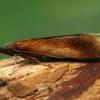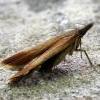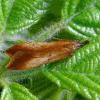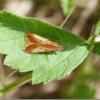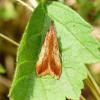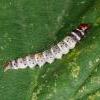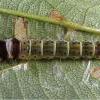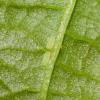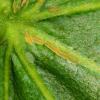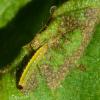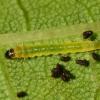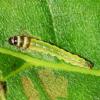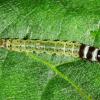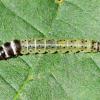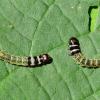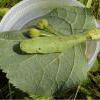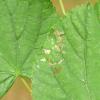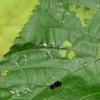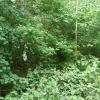35.023 Dichomeris ustalella (Fabricius, 1794)
Status and Distribution
Scarce.
Only previously known as a very local species in Monmouthshire, West Gloucestershire and Worcestershire, where it still occurs. In June 2020 four imagines were found over a period of a week (K & S Hand, and M. Gray pers. comm.) at a large woodland complex with considerable Tilia cordata (small-leaved lime), in Lincolnshire. Later, tenanted folds were found and larvae photographed. A further imago was seen here in 2025.
Following the Lincolnshire discovery, it's status in Northern Europe was checked with Keld Gregersen who advised 'the species is very rare over most of NW Europe. However, it appears to be a little more common in eastern Germany and Poland, but still occurs local and singly. In Denmark, it is taken in a few places in the southernmost part of the country (but recently, only at one site). In the Netherlands, it was gone for many years but was recaptured in 2011 and 2013 in the southern part of the country. All over Northern Europe, it seems to breed only on Tilia., .....further south it is more common, and here it lives on many different deciduous trees. D. ustalella is not known to be migratory.'
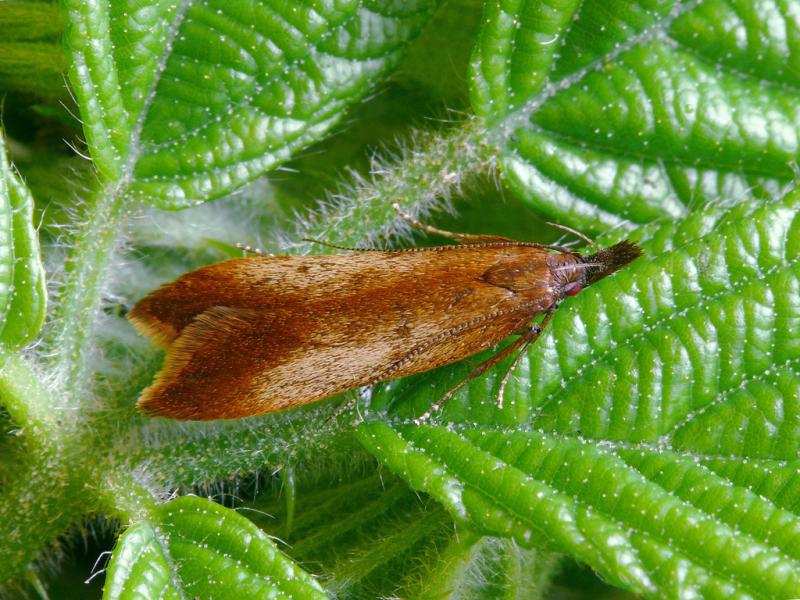
Provisional map
Foodplant and Larval Feeding Signs
Tilia cordata (small-leaved lime), see plant distribution map. In Europe, also reported to use Betula pendula (silver birch), Carpinus betulus (hornbeam), Corylus avellana (hazel), Fagus sylvatica (beech), Salix sp. (willows), Prunus sp. and Acer campestre (field maple).
Between flatly spun leaves eating out holes between the veins or occasionally between a spun bract and leaf.
Finding the Moth
Larva: feeds between flatly spun leaves or a leaf and a bract, overwintering from October in a folded leaf on the ground.
Adult: has been known to rest in the sunshine on a leaf of the foodplant and comes to light.
Similar Species
Distinctive palps and the dark, rich reddish-brown with the central golden-ochreous suffusion rule out any other species.
Single-brooded, flying from late May to June, occasionally into early July.

